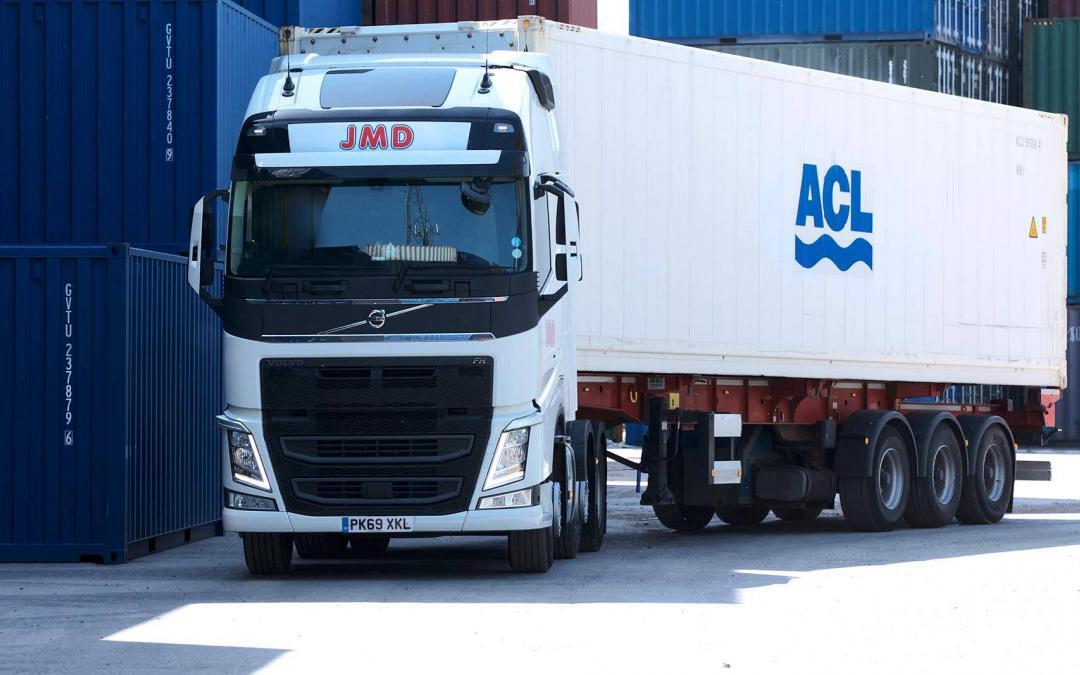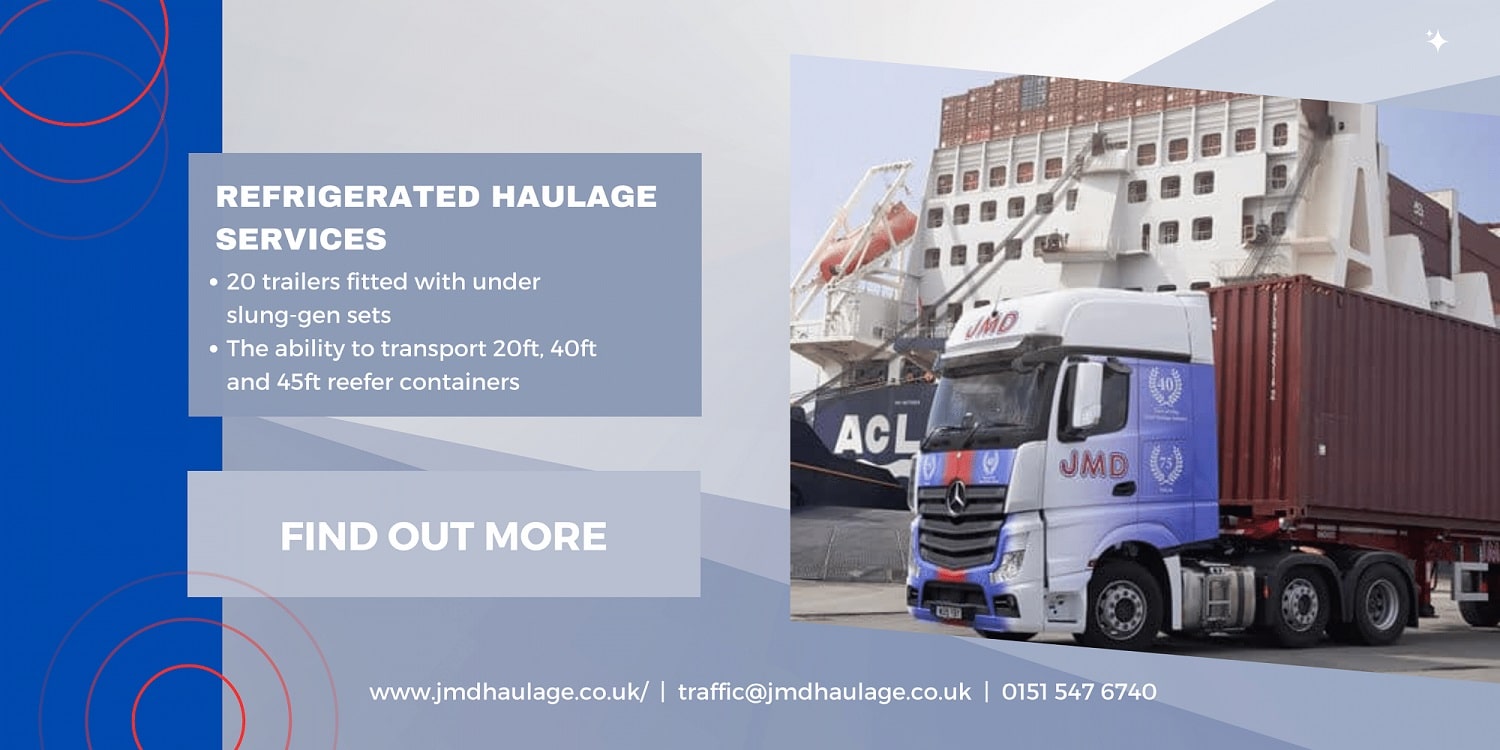The Basics of Refrigeration
Refrigeration is simply the act of removing heat. In physics, heat is seen as energy, whilst cold is simply the absence of energy. The refrigeration unit that sits inside reefer containers draws warm air into the unit, and then pushes out cold air along the bottom of the container, through a specially designed flooring that allows the cold air to circulate freely around the produce. As the warm air rises, it is sucked into the refrigeration unit, and so the process continues. Reefer containers will only maintain the temperature of the produce inside, it will not bring the goods to temperature, so bear in mind that the goods need to be already at the correct temperature when they are loaded in. They also need to be correctly loaded into the container so that that air can circulate effectively, maintaining the correct air temperature.
What is a Refrigerated Container Used for?
Reefer containers are used to transport frozen or chilled food across the globe. They are also used to transport drugs that need to be kept at a stable temperature. Due to the nature of the shipping industry, sometimes reefer containers are used to transport dry goods or goods that don’t need to be temperature controlled, as shipping companies don’t like to send empty containers across the seas.
How Does it Work?
Reefer containers are extremely useful in allowing goods to be moved around the globe at the correct temperature. Reefer containers are cleverly designed and will work extremely effectively provided that they are used correctly. They use a simple refrigeration system that cools the air within the unit, brings in fresh air as needed, and maintains the temperature as set by the operator.
Refrigeration System in Containers
Reefer containers use simple laws of physics to ensure that their refrigeration systems work effectively. Warm air inside the container will rise. This warm air is then drawn into the refrigeration unit where it is cooled down before being pumped out along the floor, through the specially designed grooves, this flooring is known as T-shaped decking. This unique flooring system allows cold air to circulate fully around the produce. Without these grooves, the produce stacked at the bottom would struggle to maintain the correct temperature.
Temperature Monitoring and Control
Reefer containers monitor the temperature and keep it at the designated level. Different produce needs to be kept at certain temperatures, and it is very important that this is monitored and controlled so that the produce doesn’t spoil.
Insulation and Air Circulation
Loading a reefer container is different from loading dry goods into a shipping container. Reefer containers rely on air circulating around the produce to keep them at the correct temperature. A poorly loaded reefer will impact the temperature regulation and may cause the produce to spoil. Reefers have load lines near the ceiling and on the floor near the doors. Don’t cover these lines with your goods, as this will prevent the air from circulating properly. Reefers are cleverly designed and will work extremely effectively if loaded correctly.
Special Considerations for Different Goods
Different goods need to be kept at different temperatures. Not only this, but some require fresh air to be bought into the container, and others are reactive to humidity. The capabilities of reefer containers mean that these various aspects can all be regulated to ensure that the ideal conditions are maintained to preserve the quality of the produce.
When it comes to refrigerated container transport, JMD Haulage is the gold standard, and we hold all the relevant green credentials, proving that we really do care about what we do.
FAQs
1. How cold are they?
The container temperature can be set to the desired temperature. Different food groups require different temperatures, and one of the advantages of using reefer containers is that you can set the temperature to the desired level. Both frozen produce and fresh produce can be transported in a reefer, as well as drugs and pharmaceuticals, and each of these need to be kept at a different temperature.
2. How long do refrigerated containers last?
Reefer containers are used to transport goods across the world, they can maintain consistent refrigeration throughout a long sea journey. They have power cables and generators so that they can be operated no matter the conditions. Reefer containers are regularly maintained to make sure that they are fit for purpose.
3. How do you load a refrigerated container?
Loading reefer containers correctly is extremely important. Different goods need to be loaded in different ways to help maintain the correct temperature. An experienced shipping company will make sure that the goods are loaded correctly for their optimum temperature. Reefers have load lines on them that show where goods can be loaded to. These need to be followed, to maintain the optimum air circulation and temperature.
4. Are refrigerated containers insulated?
Whilst we tend to think of insulation as keeping our houses warm, insulation just reduces the transference of heat between areas. So, insulation can be used to keep things cool, as well as warm. Reefer containers are insulated to help maintain the cool temperature required.
5. Do refrigerated containers have ventilation?
Fresh air is essential for certain cargo, so all reefers have the ability to draw in fresh air as required. Some shipments use the same air circulating inside the container, as cooling the internal air, is generally more economical than drawing the air in from outside and cooling that air down. It all comes down to the precise requirements of the goods that are being shipped.


